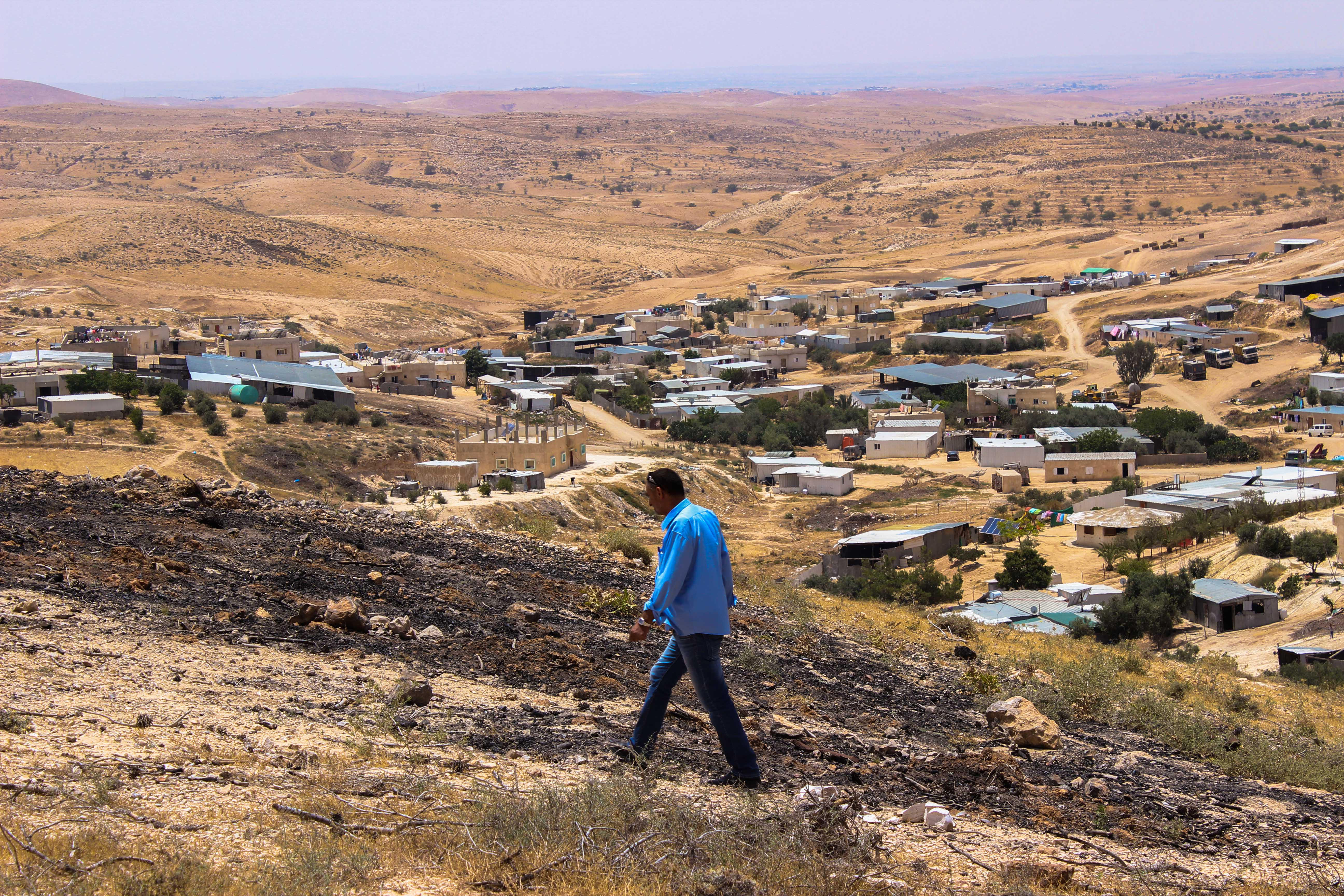
The Israeli government is set to destroy Umm al-Hiran, a Bedouin village in the Negev, to build a Jewish town in its place, which will be called Hiran. No matter what anyone tells you about unrecognized Bedouin villages, no matter what Israel’s Supreme Court or Justice Minister Ayelet Shaked say, this is the expression of a racist policy.
I grew up marching for Israel every year. In response to the U.N.’s infamous 1975 “Zionism Is Racism” resolution, we marched under the banner “Zionism is not racism” — and I still believe in that. What do we say then about a government that seizes land through twisted legal reasoning, and what do we say about tearing down this village of Israeli citizens?
Interestingly, Hiran means nothing particular in Hebrew. The name of this new town will forever be a reminder that it was first the home of Arab residents. The Jews who will live there can remember that forever. That’s better than what happened to the land the Bedouins living in Umm al-Hiran were forced off of in the 1950s. That land became Kibbutz Shoval; the memory of their past was erased for all but the most tenacious students of history — except for the Bedouin clan of Abu Alkian, who still remember that it was once their land.
The land present-day Umm al-Hiran sits on was granted to the Abu Alkian tribe more than six decades ago by Israel’s government — granted but not deeded. The plan to destroy Umm al-Hiran has been around since 2003. In 2007, I started a campaign called Save the Negev. The goal was to stop the Jewish National Fund (JNF) from pouring its money into building Jewish Hiran and dispossessing the Bedouins, and instead ask the JNF to make a significant investment in Bedouin communities. Although the JNF eventually shifted its resources, that didn’t stop the Israeli government in its long pursuit of the opposite of peace. But only in May did the supreme court rule that this demolition was completely legal, giving its blessing for the permanent conversion of Bedouin Umm al-Hiran to Jewish Hiran. As a fig leaf, the court required Jewish Hiran not to bar Arabs from applying to live there.
Meanwhile, the group Garin Hiran, the work of T’nuat Or — the so-called “Movement of Light” that deems itself the “new Zionism” — lives in nearby caravans, ready to take over the land after the village is razed. How can it be that these human beings who call themselves Jews will not be ashamed to live in this place called Hiran built over the crushed remains of Umm al-Hiran? Who are these people who see themselves as the real Zionists, who belie everything we were once (naively) taught Zionism stood for?
The Negev is a big place — big enough for an Arabic Bedouin town called Umm al-Hiran and a Jewish town — let’s imagine it as a sister city — called Hiran. Big enough that the one does not need to be utterly destroyed in order to give birth to the other. Even if that were not the case, even if there were room for only one Hiran, it would still be a kind of racist fratricide to tear down Umm al-Hiran.
But there is room, which only makes it crystal clear, painfully, ruinously clear, that this is a policy of racism, or what people actually call, without shame, a plan to “Judaize” the Negev.
The difference between Umm al-Hiran and Hiran — I mean the names themselves — is that the word “mother,” Umm, has been erased. The land, our real mother, is also being erased, its face defaced, by the violent actions of the state.
Hiran is an Arabic word that has other echoes. Hiran can mean confounding, confusion, perplexity. For those of us who once were taught about the beauty of Zionism, this indeed should be a watershed moment of perplexity.
The supreme court has given its final word on this long-standing, confusing conflict. Umm al-Hiran must die so that Jewish Hiran will live. Let the new Hiran become a monument and memorial to what we all should feel — perplexed and confounded about what Zionism has become.
Last week’s Torah portion read: “Do not twist judgment! … Justice, pursue justice — so that you will live to inherit the land …” (Deuteronomy 16:19-20). Isn’t the whole contradiction of Zionism all bound up in these two verses? But the Torah is clear: If you want to live, justice comes first, before possession.
What could save us now? Maybe Kibbutz Shoval, in a gesture of moral grandeur and spiritual audacity, could invite the dispossessed Bedouin families to come back to their land, to dwell together as brothers and sisters, or at least as cousins. Short of such extraordinary measures, however, we are left with nothing but audacity, the audacity of a brand of Zionism shot through with racism, running amok.
In January 2017, a Bedouin Arab and an Israeli policeman were killed in the village of
Umm al-Hiran during protests to stop demolitions. The government has vowed to evacuate and entirely destroy the village at the end of April 2018. The fight to save Umm al-Hiran continues.
Rabbi David Seidenberg is the creator and director of neohasid.org and author of “Kabbalah and Ecology: God’s Image in the More-Than-Human World” (Cambridge University Press, 2015). He lives in western Massachusetts, where he runs the Prayground Minyan






















 More news and opinions than at a Shabbat dinner, right in your inbox.
More news and opinions than at a Shabbat dinner, right in your inbox.